BY DEFENCE JOURNALIST SAHIL | T.I.N. NETWORK
Sapta Shakti Command Hosts Landmark ‘Security Synergy Seminar’ in Jaipur — Advocating a Whole-of-Nation Approach to Counter Future Conflicts
Jaipur, Monday, 10 November 2025:
In a defining moment for India’s evolving national security doctrine, the prestigious Security Synergy Seminar on “A Whole-of-Nation Approach (WoNA) to Counter Future Conflicts” commenced at the Jaipur Military Station under the aegis of Sapta Shakti Command. The two-day event, organised in collaboration with the Centre for Land Warfare Studies (CLAWS), New Delhi, marks a new chapter in India’s quest to synchronise military preparedness with civil, industrial, and academic strength to tackle the complexities of modern warfare.
The seminar, conceptualised by Lieutenant General Manjinder Singh, Army Commander, South Western Command, seeks to build a unified national security framework by integrating the collective capabilities of the Armed Forces, Central Armed Police Forces (CAPFs), civil administration, industry, academia, and media — the core pillars of national resilience.
Evolving Nature of Modern Warfare: The Need for National Synergy
Delivering his keynote address, Lt Gen Manjinder Singh outlined the stark realities of a rapidly transforming global security landscape. Drawing from contemporary conflicts such as the Russia–Ukraine and Israel–Hamas wars, the Army Commander emphasised that future warfare will no longer be limited to battlefields defined by borders or conventional military might. Instead, it will unfold across cyber, space, information, and economic domains, targeting infrastructure, public sentiment, and digital ecosystems alike.
“Modern warfare has transcended the physical battlefield. It is now multi-dimensional — encompassing cyber, space, drones, and electronic warfare. To safeguard national interests, India must harness every element of its national power — Diplomatic, Informational, Military, and Economic (DIME) — through technological synergy and collective resilience,” said the Army Commander.
He further underscored that “national security must become a habit — not just a priority”, stressing that true national resilience emanates from a deep-rooted sense of collective responsibility among governance institutions, industry leaders, and citizens.
Invoking Prime Minister Narendra Modi’s visionary framework of ‘JAI’ — Jointness, Atmanirbharta, and Innovation, Lt Gen Singh called for a shift from an individual-centric mindset to a nation-centric approach, envisioning a cohesive, self-reliant, and future-ready security ecosystem.
India’s First ‘Whole-of-Nation’ Security Conclave
The Security Synergy Seminar, the first of its kind under Sapta Shakti Command, brought together an extraordinary cross-section of India’s strategic community — from senior military commanders and veterans to diplomats, bureaucrats, scholars, innovators, media representatives, and over 130 students from various universities across Jaipur.
Across multiple high-level sessions, participants debated, discussed, and envisioned a comprehensive security architecture to address multi-domain threats — from hybrid warfare to cyber manipulation, from drone swarms to information operations.
The sessions were marked by intellectual intensity and open exchange of ideas, reflecting India’s transition towards an integrated security culture. Brainstorming discussions also delved into the concept of “Citizen Warriors”, underlining that every Indian citizen — irrespective of profession — acts as a gatekeeper of the nation’s security ecosystem.
The seminar highlighted that while India has made immense strides in military modernisation and defence indigenisation, challenges persist in policy coordination, technology integration, and inter-agency communication — areas that demand urgent attention to create a seamless mil-civil fusion.
Day One: Strategic Imperatives and Collaborative Pillars
The opening day witnessed deep strategic conversations on “The Strategic Imperative of WoNA” and “Forging Partnerships – The Pillars of Collaboration”, setting the intellectual tone for the event. Experts argued that no single institution — military or civilian — can safeguard national sovereignty in isolation. Instead, India’s security architecture must evolve as a shared ecosystem, balancing defence innovation, intelligence cooperation, and policy synchronisation.
Prominent speakers explored how defence production, private innovation, and digital transformation can act as enablers for the Armed Forces. The sessions emphasised that Atmanirbhar Bharat in defence is not merely a manufacturing goal but a strategic necessity to achieve operational independence and technological sovereignty.
Participants also discussed the creation of state-level frameworks for security synergy — an approach that decentralises preparedness, empowering local governance, industry, and citizens to act as first responders in times of crisis.
A New Security Blueprint for Rajasthan
A key highlight of the seminar was the proposal to establish a Rajasthan-specific security model, designed under the Whole-of-Nation Approach to serve as a prototype for other states. This framework seeks to merge civil defence, police, paramilitary, and industry-driven technological solutions under one unified response mechanism — enabling rapid, coordinated action during emergencies or hybrid threats.
By doing so, Sapta Shakti Command envisions Rajasthan as a model state of national preparedness, where military innovation meets public participation, and where the principles of “secure, self-reliant, and collaborative defence” can inspire similar frameworks across India.
Day Two: Information Operations and Future Conflicts
The second day of deliberations, scheduled for 11 November, will focus on Information Operations and Future Conflict Preparedness — two emerging dimensions that have redefined national security in the digital era. The sessions are expected to explore counter-disinformation strategies, artificial intelligence (AI)-enabled surveillance, and psychological warfare — domains where narratives often precede action.
As the digital space becomes a new battlefield, India’s approach to security must adapt to manipulative propaganda, cyber intrusion, and perception warfare, all of which can destabilise nations without a single shot fired.
Bridging Policy, Technology, and Civil Responsibility
Beyond its academic and strategic relevance, the Security Synergy Seminar carries profound policy implications. It calls for bridging the gap between national institutions and grassroots implementation, fostering a culture of security awareness across every level of governance and citizenship.
Experts repeatedly highlighted that a robust “Whole-of-Government” approach cannot succeed without a parallel “Whole-of-Society” response — aligning the private sector, education system, research institutions, and media within the national security vision.
This initiative thus represents India’s transition from reaction to prevention, from fragmentation to integration, where every stakeholder becomes a vital cog in the machinery of national defence.
From Dialogue to Action: Sapta Shakti Command Leads the Way
Under the leadership of Lt Gen Manjinder Singh, the Sapta Shakti Command has emerged as a trailblazer in driving military-civil fusion, technological integration, and intellectual synergy across India’s western and desert sectors.
The Command’s approach reflects a deep understanding that future conflicts will not just test weapons — but systems, willpower, and synergy. By convening this seminar, the Indian Army has signalled a transformative shift — from traditional force-centric security to comprehensive national preparedness, powered by knowledge, innovation, and unity of purpose.
Towards Atmanirbhar and Viksit Bharat 2047
The Security Synergy Seminar is not merely an event — it is a strategic milestone on India’s journey towards Atmanirbhar Bharat and Viksit Bharat 2047. Each discussion, each recommendation from the forum, aims to transform dialogue into policy, and policy into practice — strengthening India’s self-reliance and resilience at every level.
The seminar concluded with a resounding message:
National security is not the Army’s responsibility alone — it is the soul of the nation, and every citizen is its custodian.
📰
BY DEFENCE JOURNALIST SAHIL | T.I.N. NETWORK
सप्त शक्ति कमान में हुआ ऐतिहासिक ‘सिक्योरिटी सिनर्जी सेमिनार’ — भविष्य के संघर्षों से निपटने के लिए व्होल ऑफ़ नेशन एप्रोच पर जोर
जयपुर, सोमवार, 10 नवंबर 2025:
भारत की राष्ट्रीय सुरक्षा रणनीति को एकीकृत और आधुनिक दृष्टिकोण देने की दिशा में, सप्त शक्ति कमान के तत्वावधान में जयपुर मिलिट्री स्टेशन पर ‘सिक्योरिटी सिनर्जी सेमिनार’ का शुभारंभ हुआ। विषय था – “व्होल ऑफ़ नेशन एप्रोच (WoNA) टू काउंटर फ्यूचर कन्फ्लिक्ट्स” यानी भविष्य के युद्धों और संघर्षों से निपटने के लिए राष्ट्र के सभी घटकों का एकीकृत दृष्टिकोण।
दो दिवसीय यह सेमिनार सेंटर फॉर लैंड वारफेयर स्टडीज (CLAWS), नई दिल्ली के सहयोग से आयोजित किया गया, जिसे लेफ्टिनेंट जनरल मंजिंदर सिंह, आर्मी कमांडर, साउथ वेस्टर्न कमांड की परिकल्पना पर आयोजित किया गया। इस सेमिनार का उद्देश्य था – सशस्त्र बलों, केंद्रीय अर्द्धसैनिक बलों, सिविल प्रशासन, उद्योग जगत, शिक्षा संस्थानों और मीडिया के बीच सामरिक तालमेल बढ़ाकर एक ऐसा समग्र सुरक्षा ढाँचा तैयार करना जो आने वाले बहुआयामी युद्धों का सामना कर सके।
आधुनिक युद्ध का बदलता स्वरूप – ‘राष्ट्रीय समन्वय’ की आवश्यकता
अपने उद्घाटन भाषण में लेफ्टिनेंट जनरल मंजिंदर सिंह ने वैश्विक सुरक्षा परिदृश्य के बदलते स्वरूप पर प्रकाश डाला। उन्होंने कहा कि आज का विश्व ‘सुरक्षा अस्थिरता’ के दौर से गुजर रहा है — जहाँ युद्ध अब केवल सीमाओं पर नहीं लड़े जा रहे, बल्कि साइबर, स्पेस, सूचना, और आर्थिक क्षेत्रों में भी फैल चुके हैं।
उन्होंने रूस–यूक्रेन और इज़राइल–हमास संघर्षों का उदाहरण देते हुए बताया कि आधुनिक युद्ध में नागरिक ढांचे, आर्थिक संसाधन, सूचना माध्यम और साइबर नेटवर्क सभी लक्ष्य बन चुके हैं।
“आधुनिक युद्ध अब केवल सैनिकों का नहीं रहा। यह एक बहु-डोमेन संघर्ष है — जिसमें साइबर, ड्रोन, स्पेस और इलेक्ट्रॉनिक वॉरफेयर के साथ-साथ सूचना और अर्थव्यवस्था भी शामिल हैं। ऐसे में भारत को अपनी राष्ट्रीय शक्ति के सभी स्तंभों – डिप्लोमैटिक, इन्फॉर्मेशनल, मिलिट्री और इकोनॉमिक (DIME) – को तकनीकी समन्वय के साथ जोड़ना होगा,” उन्होंने कहा।
लेफ्टिनेंट जनरल सिंह ने जोर देते हुए कहा कि –
“राष्ट्रीय सुरक्षा किसी नीति का विषय नहीं, बल्कि हर नागरिक की आदत बननी चाहिए।”
उन्होंने यह भी कहा कि असली राष्ट्रीय रेजिलिएंस शासन, उद्योग और नागरिकों के सामूहिक प्रयास से ही बनता है।
प्रधानमंत्री नरेंद्र मोदी की ‘JAI’ (Jointness, Atmanirbharta, Innovation) की सोच को आधार मानते हुए उन्होंने कहा कि अब समय है “व्यक्ति-केंद्रित से राष्ट्र-केंद्रित” सोच अपनाने का — ताकि एक एकीकृत, आत्मनिर्भर और भविष्य-तैयार भारत का निर्माण हो सके।
भारत का पहला ‘Whole-of-Nation’ सुरक्षा मंच
सिक्योरिटी सिनर्जी सेमिनार अपने आप में ऐतिहासिक रहा क्योंकि इसमें पहली बार एक ही मंच पर सेना, नौकरशाही, उद्योग, कूटनीति, शिक्षा जगत, मीडिया और 130 विश्वविद्यालय छात्रों ने मिलकर राष्ट्रीय सुरक्षा पर विचार-विमर्श किया।
विचार सत्रों में हाइब्रिड युद्ध, साइबर मैनिपुलेशन, ड्रोन हमलों, और इंफॉर्मेशन वॉरफेयर जैसे विषयों पर गहन चर्चा हुई।
‘सिटीजन वॉरियर्स’ की अवधारणा भी सामने रखी गई — जिसके तहत यह बताया गया कि हर नागरिक राष्ट्र की सुरक्षा श्रृंखला का ‘गेटकीपर’ है।
सेमिनार में यह स्पष्ट हुआ कि भारत ने रक्षा आधुनिकीकरण और स्वदेशीकरण में उल्लेखनीय प्रगति की है, परंतु पॉलिसी कोऑर्डिनेशन, टेक्नोलॉजिकल इंटीग्रेशन और इंटर-एजेंसी कम्युनिकेशन जैसे क्षेत्रों में अब भी मजबूत सुधार की आवश्यकता है।
पहला दिन – रणनीतिक प्राथमिकताएँ और सहयोग के स्तंभ
पहले दिन का फोकस रहा – “The Strategic Imperative of WoNA” और “Forging Partnerships – The Pillars of Collaboration”।
विशेषज्ञों का मानना था कि राष्ट्रीय सुरक्षा केवल सेना की जिम्मेदारी नहीं, बल्कि सभी संस्थानों का साझा दायित्व है।
सत्रों में इस बात पर जोर दिया गया कि आत्मनिर्भर भारत केवल ‘मैन्युफैक्चरिंग गोल’ नहीं, बल्कि यह रणनीतिक स्वतंत्रता का प्रतीक है।
डिजिटल ट्रांसफॉर्मेशन, प्राइवेट सेक्टर इनोवेशन और रक्षा उत्पादन को जोड़ने से सेना की ऑपरेशनल क्षमता और स्वावलंबन दोनों मजबूत होंगे।
विचार विमर्श में राज्य-स्तरीय सुरक्षा ढांचे की भी अवधारणा प्रस्तुत की गई — ताकि स्थानीय शासन, उद्योग और नागरिक आपदा या युद्ध जैसी स्थिति में पहले स्तर के उत्तरदाता (First Responders) बन सकें।
राजस्थान मॉडल – राष्ट्रव्यापी सुरक्षा की नई रूपरेखा
सेमिनार का सबसे महत्वपूर्ण बिंदु रहा राजस्थान के लिए एक ‘स्टेट सिक्योरिटी मॉडल’ का प्रस्ताव, जिसे Whole-of-Nation Approach के तहत विकसित किया जाएगा।
यह मॉडल सिविल डिफेंस, पुलिस, पैरामिलिट्री फोर्सेज और उद्योग जगत के तकनीकी समाधानों को एकीकृत करेगा, ताकि संकट की स्थिति में समन्वित और तेज़ प्रतिक्रिया दी जा सके।
इससे राजस्थान को ‘मॉडल स्टेट ऑफ नेशनल प्रिपेयर्डनेस’ के रूप में विकसित किया जाएगा, जहाँ सैन्य नवाचार और नागरिक भागीदारी एक साथ मिलकर सुरक्षा और आत्मनिर्भरता का नया मानदंड स्थापित करेंगे।
दूसरा दिन – सूचना युद्ध और भविष्य के संघर्ष
सेमिनार के दूसरे दिन, यानी 11 नवंबर को, “Information Operations and Future Conflicts” पर चर्चा होगी।
यह सत्र बताएगा कि भविष्य के युद्ध कैसे अब सूचना, सोशल मीडिया और सायकोलॉजिकल ऑपरेशन्स में लड़े जा रहे हैं — जहाँ नैरेटिव पहले बनता है और गोलियाँ बाद में चलती हैं।
चर्चाओं में AI आधारित निगरानी, फेक न्यूज़ काउंटर स्ट्रेटेजीज़, साइबर सुरक्षा और डिजिटल मनोवैज्ञानिक युद्ध जैसे विषयों को शामिल किया जाएगा।
यह एक ऐसा क्षेत्र है जहाँ राष्ट्र की रक्षा अब केवल सैनिकों से नहीं, बल्कि सूचना-साक्षर नागरिकों से भी सुनिश्चित होगी।
नीति, तकनीक और नागरिक उत्तरदायित्व का संगम
सिक्योरिटी सिनर्जी सेमिनार ने यह संदेश दिया कि राष्ट्रीय सुरक्षा केवल सीमाओं की रक्षा तक सीमित नहीं — बल्कि यह एक संस्कृति है, जिसे शासन, उद्योग, शिक्षा और नागरिक समाज मिलकर गढ़ते हैं।
विशेषज्ञों ने बार-बार इस बात पर जोर दिया कि ‘Whole-of-Government’ एप्रोच तब तक प्रभावी नहीं हो सकता जब तक उसके साथ एक ‘Whole-of-Society’ एप्रोच न हो — यानी हर नागरिक को सुरक्षा और आत्मनिर्भरता के राष्ट्रीय मिशन का हिस्सा बनाना होगा।
यह पहल भारत के सुरक्षा दृष्टिकोण को “Reaction से Prevention” और “Fragmentation से Integration” की दिशा में ले जा रही है।
संवाद से संकल्प तक – सप्त शक्ति कमान का अग्रदूत नेतृत्व
लेफ्टिनेंट जनरल मंजिंदर सिंह के नेतृत्व में सप्त शक्ति कमान ने स्वयं को मिलिट्री-सिविल फ्यूजन, टेक्नोलॉजिकल इनोवेशन और स्ट्रेटेजिक सिनर्जी का प्रणेता सिद्ध किया है।
यह कमान केवल रक्षा की नहीं, बल्कि राष्ट्रीय चेतना की कमान बन चुकी है।
इस सेमिनार के माध्यम से भारतीय सेना ने स्पष्ट संकेत दिया है कि आने वाले युद्धों में सिर्फ हथियार नहीं, बल्कि सिस्टम, इच्छाशक्ति और एकता की परीक्षा होगी।
और उस परीक्षा के लिए भारत अब पूरी तरह तैयार है — आत्मनिर्भर, संयोजित और प्रबुद्ध।
आत्मनिर्भर और विकसित भारत 2047 की दिशा में एक निर्णायक कदम
यह सेमिनार मात्र एक आयोजन नहीं, बल्कि राष्ट्रीय सुरक्षा नीति में परिवर्तन की एक नई शुरुआत है।
यह भारत के उस आत्मविश्वास का प्रतीक है जो ‘आत्मनिर्भर भारत’ और ‘विकसित भारत 2047’ के विज़न को साकार करने के लिए कार्यरत है।
अंत में यह संदेश गूंजा —
“राष्ट्रीय सुरक्षा केवल सेना की जिम्मेदारी नहीं, यह राष्ट्र की आत्मा है — और हर नागरिक उसका संरक्षक है।”
BY DEFENCE JOURNALIST SAHIL | T.I.N. NETWORK




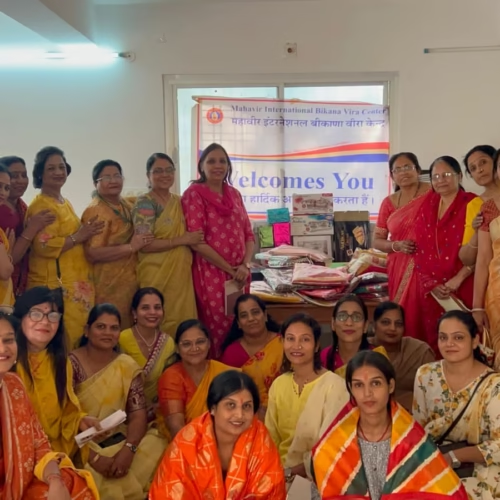
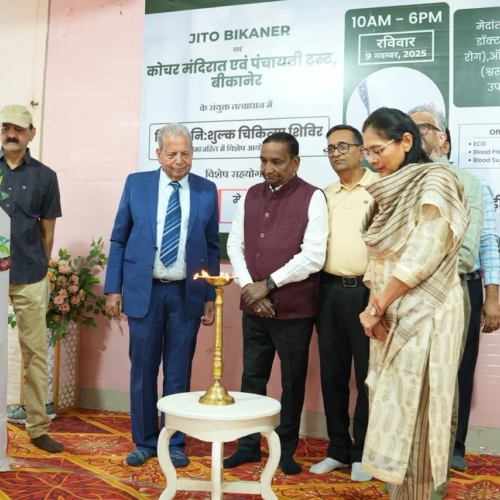

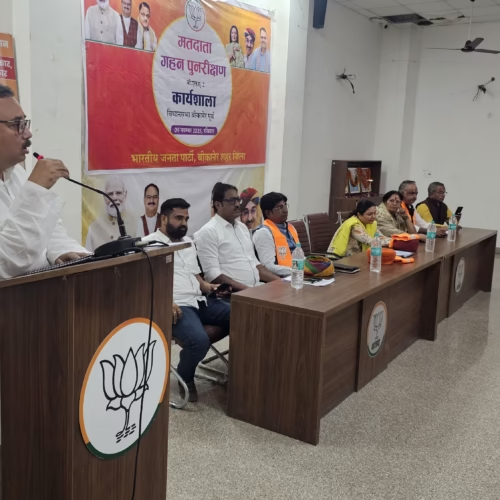
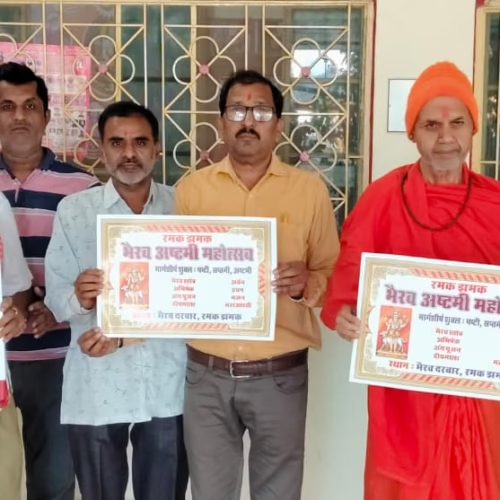
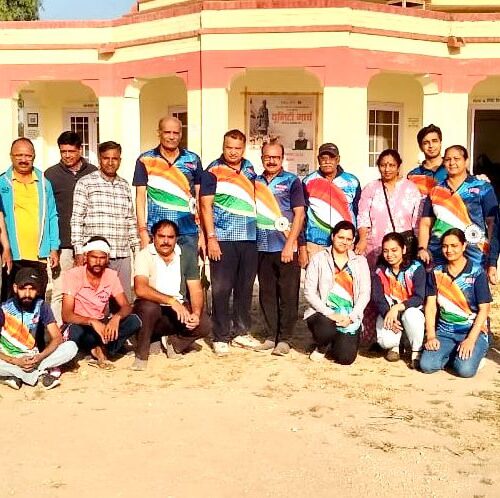
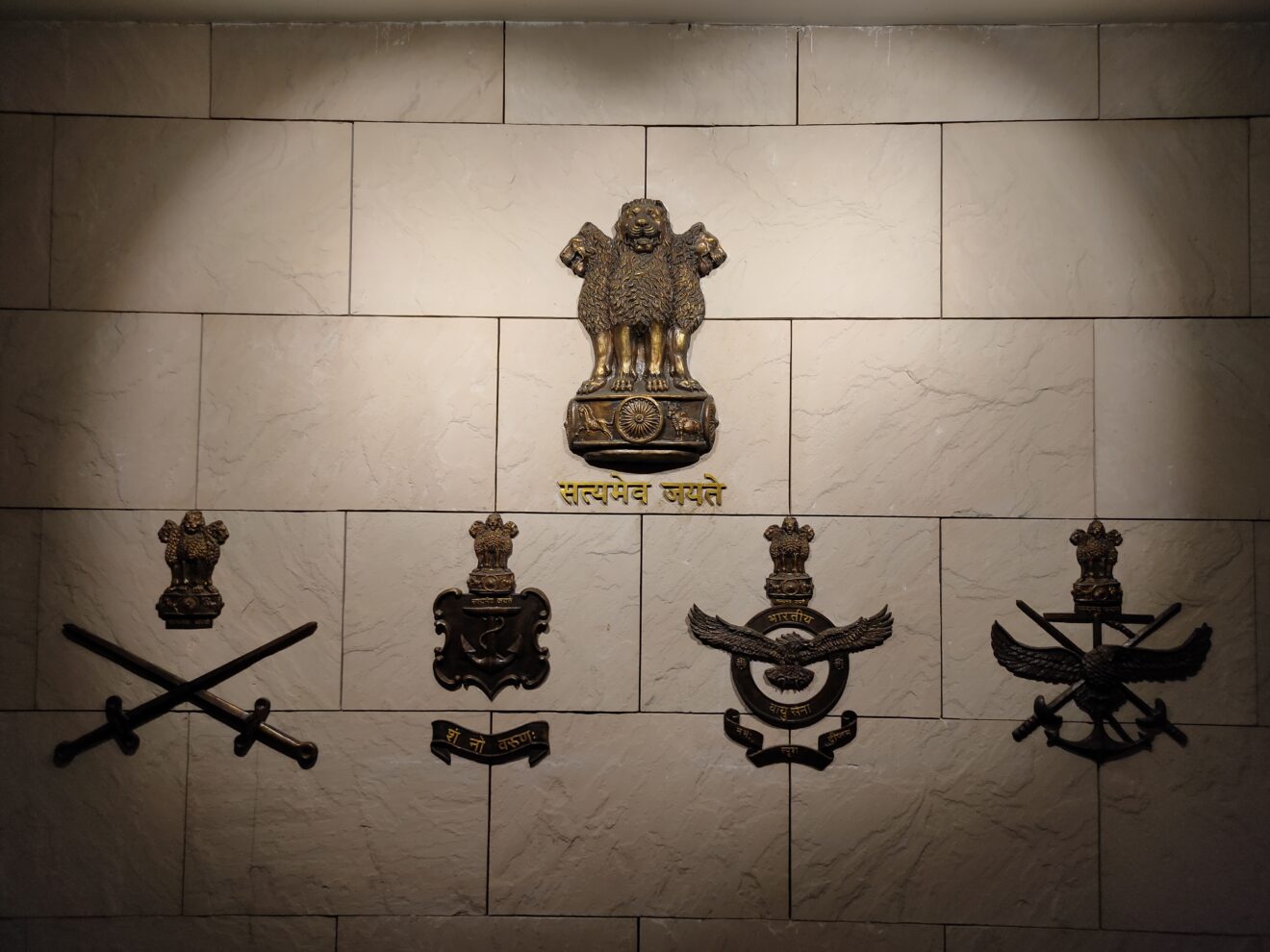




Add Comment